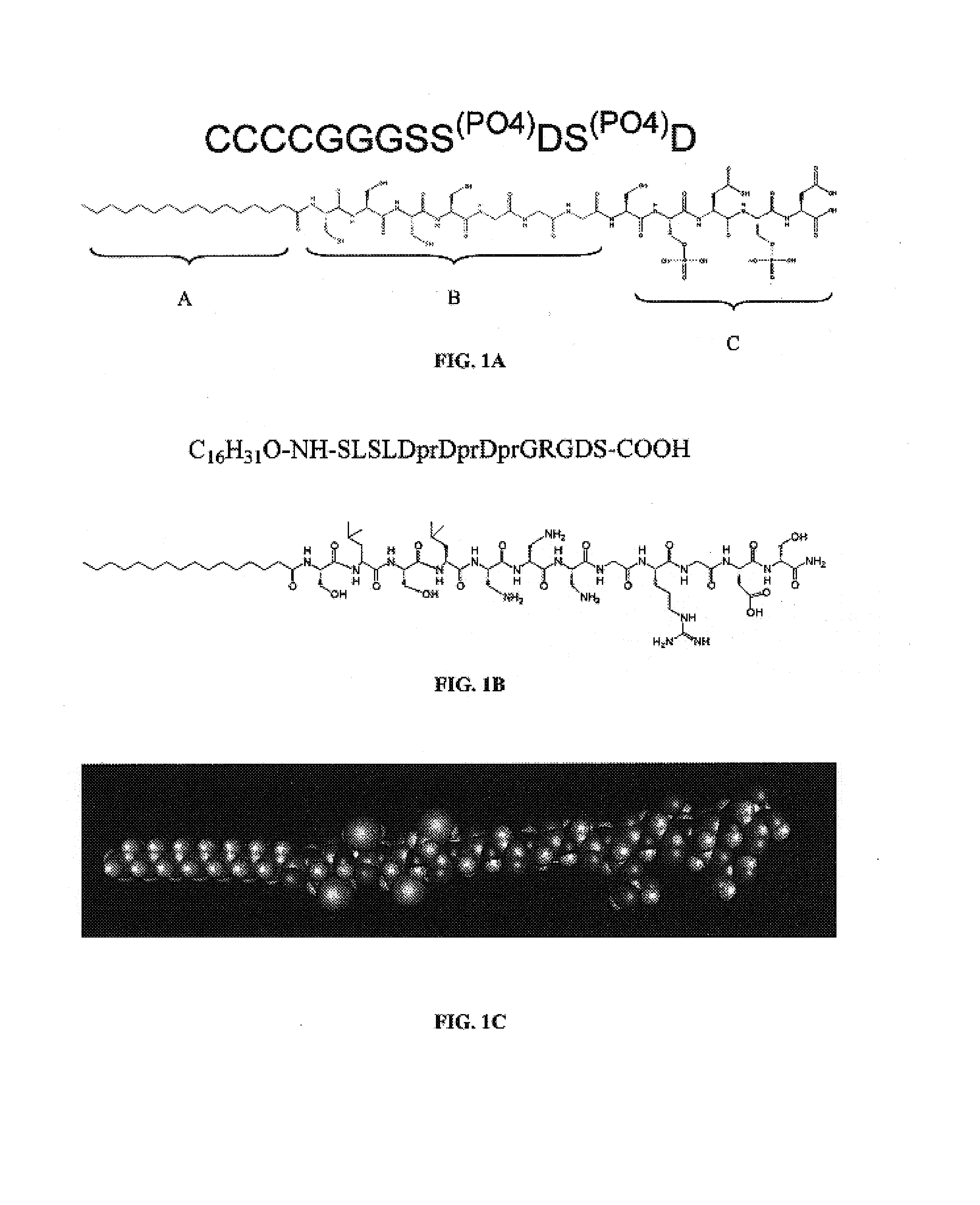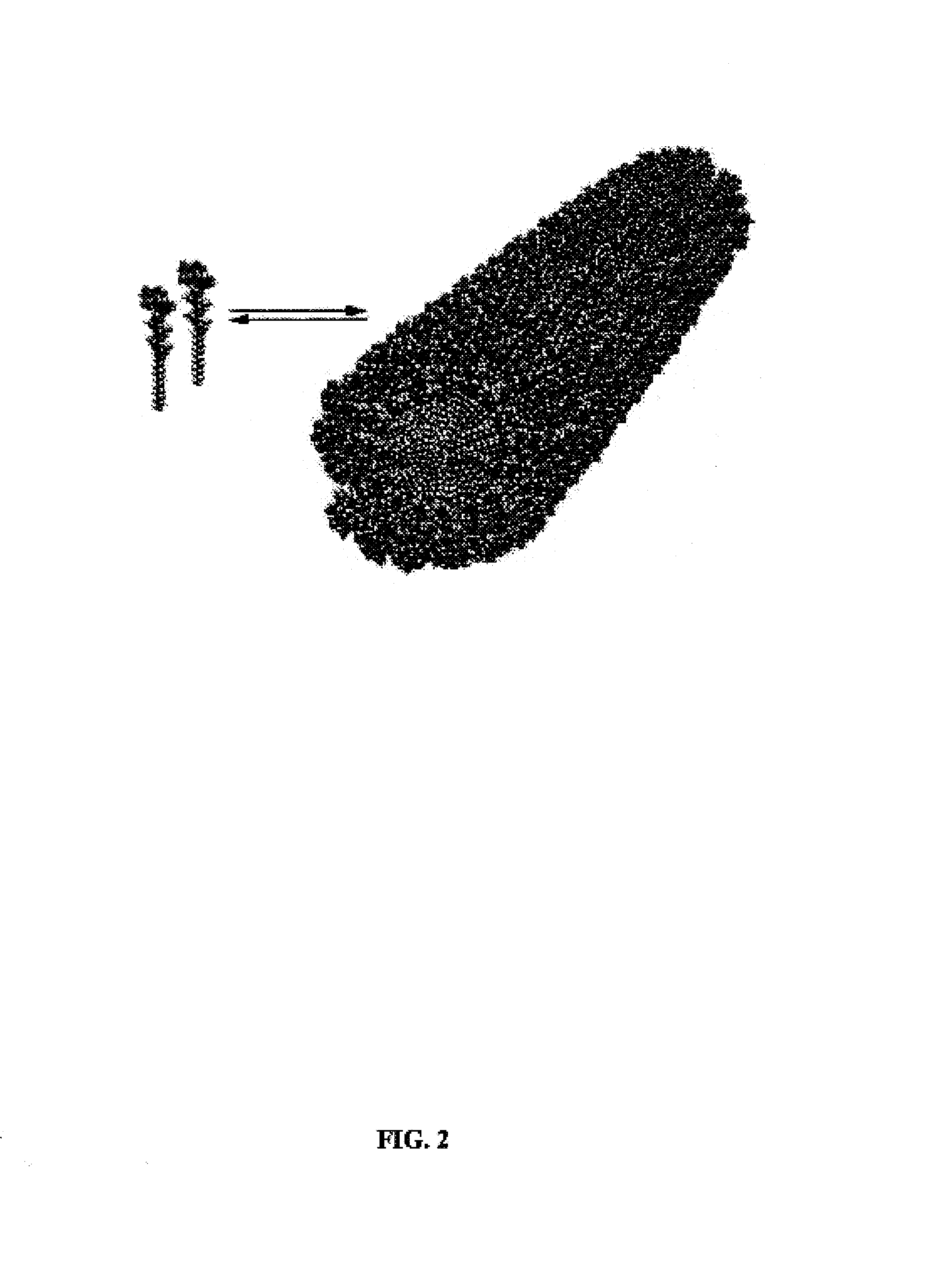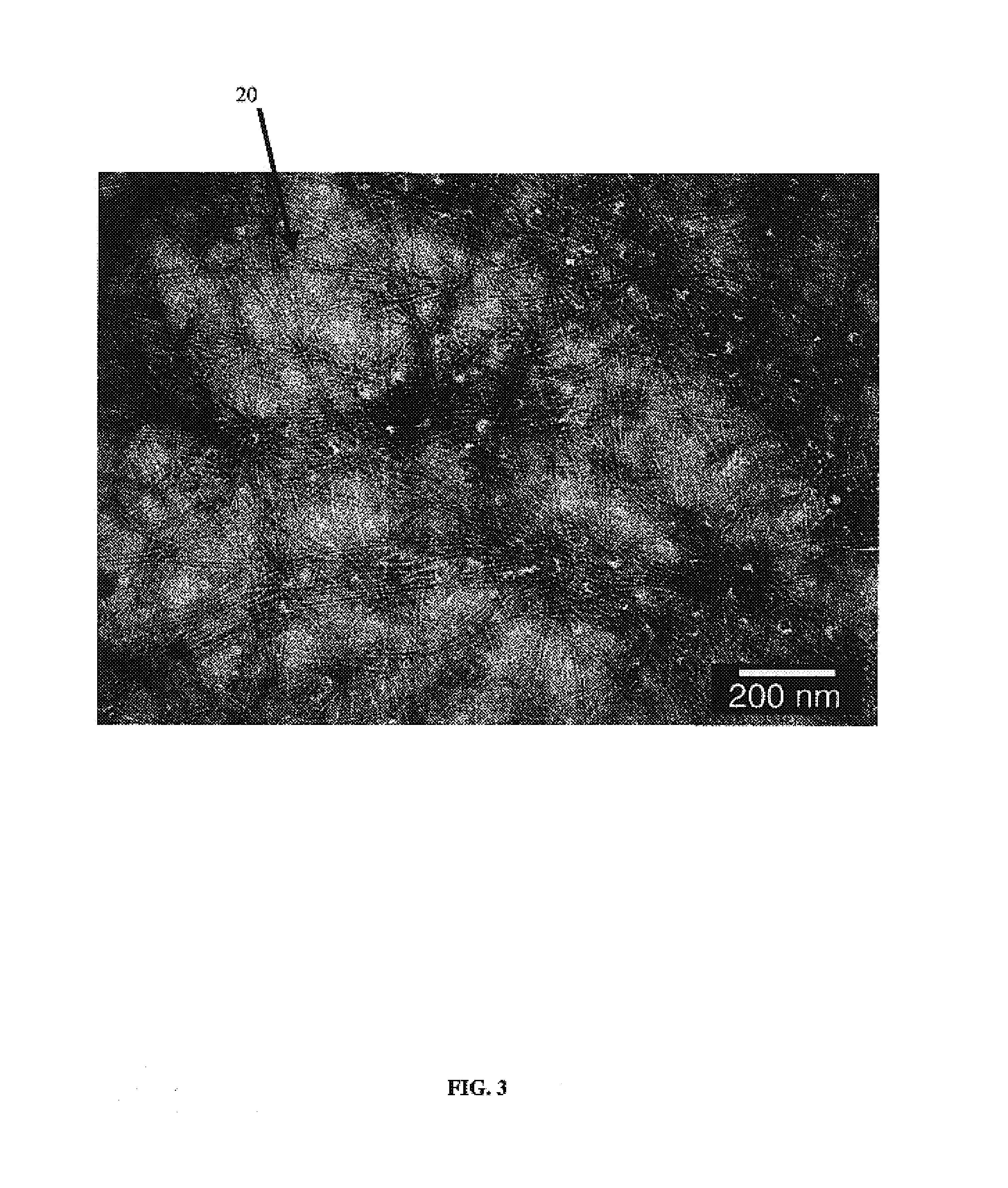Charged peptide-amphiphile solutions and self-assembled peptide nanofiber networks formed therefrom
- Summary
- Abstract
- Description
- Claims
- Application Information
AI Technical Summary
Benefits of technology
Problems solved by technology
Method used
Image
Examples
example 1
[0063]This example describes the synthesis of the peptide amphiphile SEQ ID NO:1, C16H31O-CCCCGGGSS(P)DS(P)D).
[0064]Solvents and reagents for peptide synthesis were purchased from Fisher Scientific and Sigma-Aldrich respectively, while amino acids and resins were provided by Novabiochem (San Diego, Calif.) and Applied Biosystems (Foster City, Calif.).
[0065]The synthesis of the peptide portion of the molecule was performed using standard solid phase synthesis on an Applied Biosystems 433A automated peptide synthesizer. The peptide was grown on an aspartic acid-functionalized Wang polystyrene resin, using Fmoc protection of the amine terminus. 0.95 molar equivalents of HBTU and 6 equivalents of diisopropylethylamine (DEEA) were used for each new amino acid coupled to the resin. A sixteen-carbon alkyl tail was subsequently added to the N-terminus of the peptide manually, by adding 3 molar equivalents of palmitic acid to the peptide, in the presence of 0.95 palmitic acid molar equivalen...
example 2
[0067]This example illustrates the self assembly of negatively charged peptide amphiphiles using positively charged peptide amphiphiles, coassembly, to induce nanofiber gel formation. An aliquot of 50 mL of 10 mg / mL SSDSD PA, SEQ ID NO:25, was mixed with 150 mL, approximately 3 molar equivalents, of C16H31O-SLSLDprDprDprGRGDS, SEQ ID NO:22.The resulting coassembly forms a self-supporting PA nanofiber gel. Similar approaches may be applied using variations the charged molecules involved.
example 3
[0068]This example illustrates the synthesis of a positively charged peptide amphiphile SEQ ID NO:22, C16H31O-SLSLDprDprDprGRGDS having a +3 charge.
[0069]Solvents and reagents for peptide synthesis were purchased from Fisher Scientific and Sigma-Aldrich respectively, while amino acids and resins were provided by Novabiochem (San Diego, Calif.) and Applied Biosystems (Foster City, Calif.).
[0070]The synthesis of the peptide portion of the molecule wass performed using standard solid phase synthesis on an Applied Biosystems 433A automated peptide synthesizer. The peptide is grown on a Rink amide MBHA polystyrene resin, using Fmoc protection of the amine terminus. 0.95 molar equivalents of HBTU and 6 equivalents of diisopropylethylamine (DIEA) were used for each new amino acid coupled to the resin. A sixteen-carbon alkyl tail was subsequently added to the N-terminus of the peptide manually, by adding 3 molar equivalents of palmitic acid to the peptide, in the presence of 0.95 palmitic a...
PUM
| Property | Measurement | Unit |
|---|---|---|
| Length | aaaaa | aaaaa |
| Amphiphilic | aaaaa | aaaaa |
| Composition | aaaaa | aaaaa |
Abstract
Description
Claims
Application Information
 Login to View More
Login to View More - R&D
- Intellectual Property
- Life Sciences
- Materials
- Tech Scout
- Unparalleled Data Quality
- Higher Quality Content
- 60% Fewer Hallucinations
Browse by: Latest US Patents, China's latest patents, Technical Efficacy Thesaurus, Application Domain, Technology Topic, Popular Technical Reports.
© 2025 PatSnap. All rights reserved.Legal|Privacy policy|Modern Slavery Act Transparency Statement|Sitemap|About US| Contact US: help@patsnap.com



